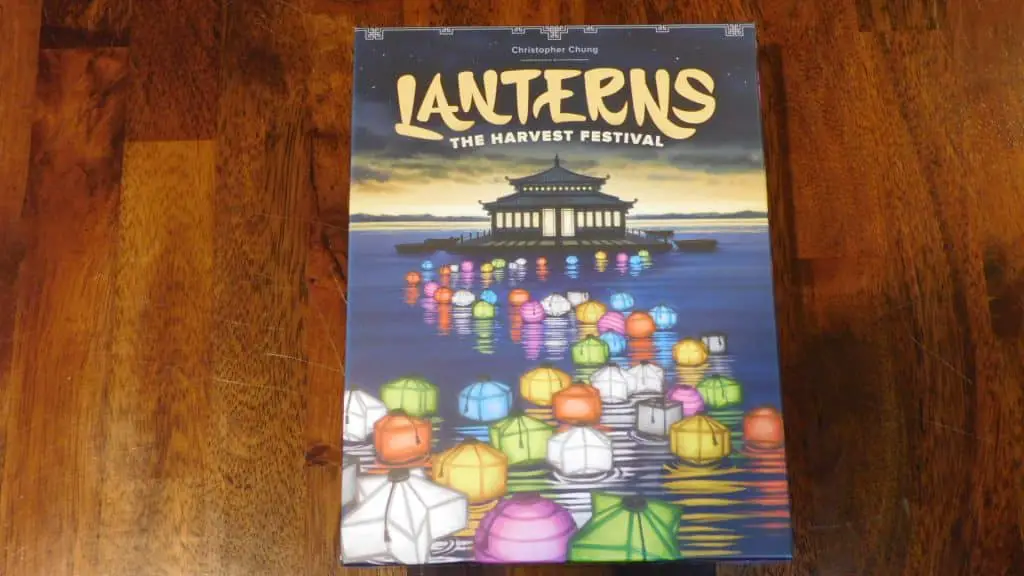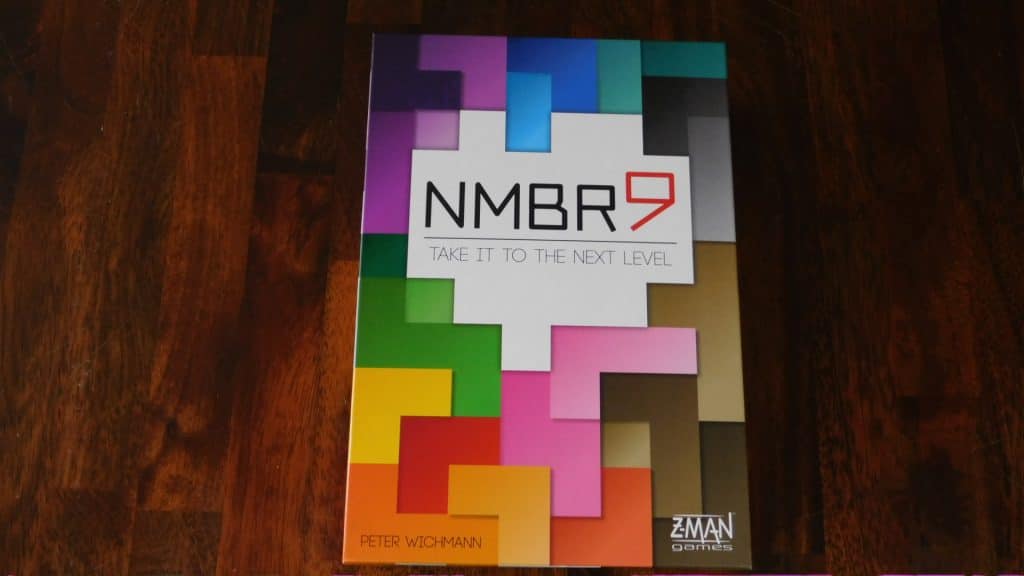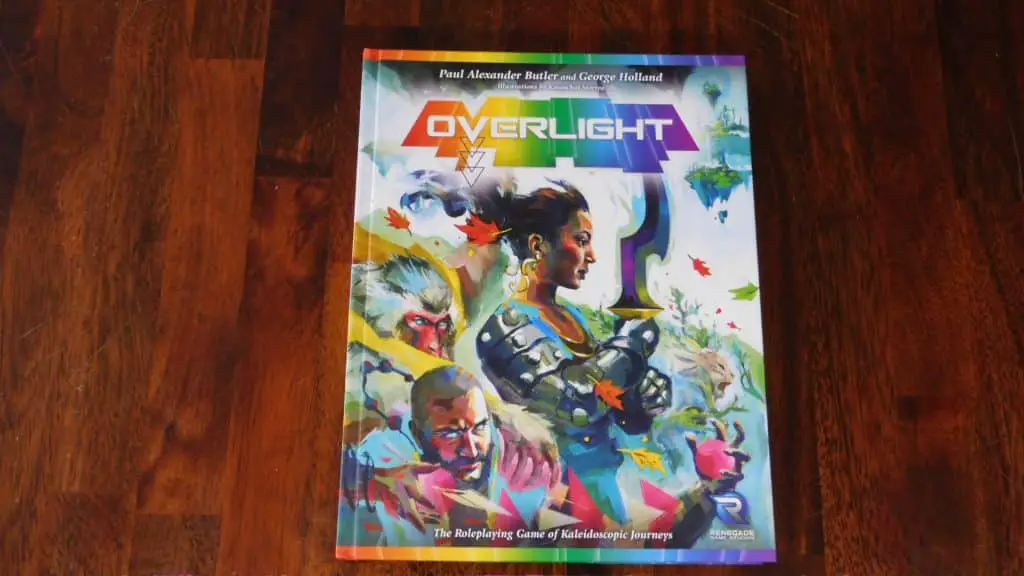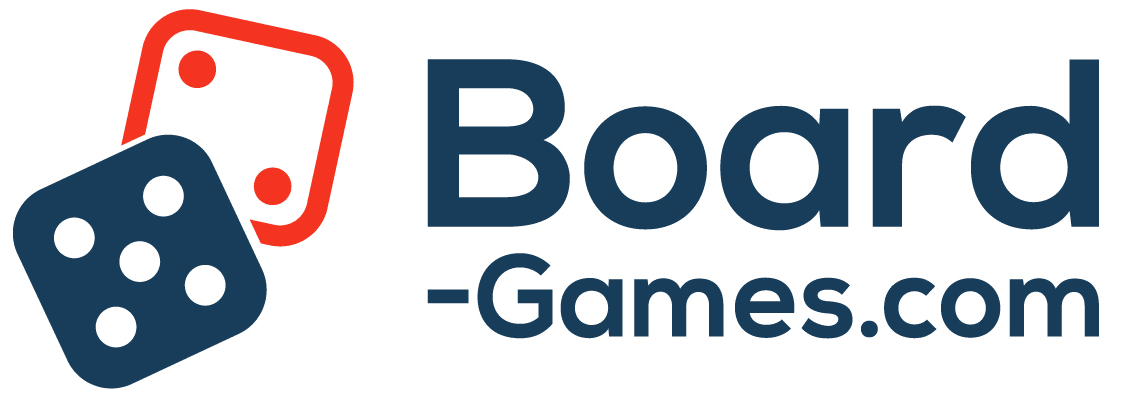When it comes to rainbows, there are quite a few games that involve them. Today, I’m going to go over just four (and a bonus!) because these are the best choices that I’m aware of. So, which board game relates to a rainbow?
The board games that relate to a rainbow are Rainbow, Hanabi, Lanterns: The Harvest Festival, and NMBR 9. There’s also a roleplaying game called Overlight which relates to a rainbow too. Rainbow relates to a rainbow because it’s all about building a rainbow, Hanabi, Lanterns: The Harvest Festival, and NMBR 9 feature colors that come from and look like rainbows, and Overlight takes place in a world where people can use the seven colors of the rainbow as powers.
Table of Contents
How Did I Choose Which Board Games Relate To A Rainbow?
So, for a time in my life, I had a mild passion for art. I steadily developed much more of a passion for writing, but for a little while, art was my creative outlet. I say this because if I learned nothing else during my time with art, I learned that a rainbow was comprised of the colors, ROYGBIV, which stands for Red, Orange, Yellow, Green, Blue, Indigo, and Violet.
So, when thinking about which board game relates to a rainbow, I immediately started thinking of games that had colors similar to a rainbow. Hanabi was one of the first that came to mind followed by NMBR 9. But I wasn’t satisfied because neither one of those was specifically about rainbows.
Determined, I did some research and discovered the game, Rainbow (imagine!). During that process, I was reminded of Lanterns: The Harvest Festival (which I’ll shorten to Lanterns for the rest of this article), and while I was putting this list together I remembered the roleplaying game, Overlight.
To me, board games or roleplaying games RPG) don’t have to be about rainbows to relate to rainbows. Sometimes board games, such as Hanabi, Lanterns, and NMBR 9, take inspiration from the colors of a rainbow. To me, that’s enough to put them on this list.
Now that I’ve gone over that a little bit, let’s dive a little deeper into each game. So, without any further ado, here are the board games that relate to a rainbow.
4 Board Games That Relate To A Rainbow (And A Bonus Game!)
There’s no particular order to this list, so please keep in mind that even though Hanabi comes first and Overlight comes last, that doesn’t mean one is better than the other. Okay, with that said, let’s go!
1. Hanabi

Hanabi is a game I have owned twice. “Twice?” you might ask. Yes, twice. Not only that, but I don’t own it as of the time of this writing (I will soon though).
I first played Hanabi at a store that held board game gatherings on Wednesdays. This was a long time ago, but it was such an interesting game experience that I have yet to see replicated in another one (we’ll get to that shortly). So, enjoying the game, I bought it.
Then, a deluxe version came out with Mahjong-style tiles in place of the cards the game normally uses. So, I bought that and got rid of the card version. As a side note, there’s also a Hanabi Deluxe II version as well.
Then, with the help of my girlfriend at the time, I went through a great board game purge. I got rid of a bunch of games (about half of my collection) that I didn’t play anymore or had never played. Hanabi Deluxe went out with those games because it just didn’t hit the table often.
If you were to ask me why now, I’m not sure I could give you a good answer. I like Hanabi, and I’d play it right now. I think I found it a little too heavy on the thinking for what my friends and I were looking for at the time though.
Back-Of-The-Box Facts About Hanabi
- Player Count: 2-5
- Time To Play: 30 minutes
- Age Range: 8 and up
- Difficulty: Beginner/Easy
- Price Range: $10-$20
- Release Year: 2010
- Publisher(s): R&R Games
- Designer(s): Antoine Bauza
- Artist(s): Antoine Bauza, Albertine Ralenti, and Gérald Guerlais
- Expansion(s): Master Artisan Expansion and Black Powder Expansion
- Deluxe Version(s): Hanabi Deluxe, Hanabi Deluxe II
- Where To Buy: Amazon, Game Nerdz, R&R Games Store
A Quick Overview Of Gameplay
In Hanabi, everyone is working together. Everyone has 5 cards in their hands, but the twist is that they can’t see their cards; only everyone else can. So, throughout the game, you have to give clues to help each other figure out what each card is.
The only problem is, that you have a limited number of clues, which can only be refreshed by discarding cards you might need later or by completing one of the five stacks of cards (more on that in a bit). Plus, you can only tell a player what the number or color of a card is (or cards if there’s more than one of that number or color in their hand). This gets even more complicated because there are 5 different colors (red, yellow, blue, green, and white) and 5 numbers (1, 2, 3, 4, 5) for each color.
Your goal is to play as many of the cards in order as you can. The more you do, the more points you score at the end of the game. Oh, and if you play cards incorrectly (not in number order or the wrong color) three times you all lose. Yay, Hanabi!
How This Board Game Relates To A Rainbow
When writing this article, I thought of Hanabi immediately. It doesn’t have all the colors of the rainbow, but it has enough for my tastes. Plus, there’s an advanced mode included in the box that adds color, which is all the other colors combined, adding to the feel of a rainbow-type game.
2. Lanterns

Lanterns is similar to Hanabi in that I have owned it previously, but only once. Also similar to Hanabi is the fact that I’ve played Lanterns, but also only once. I also can’t remember much of playing it except that I didn’t think it was good enough for me to keep in my collection.
Keep in mind that’s just my opinion though. That also doesn’t mean it’s a bad game. Plenty of people enjoy Lanterns. Heck, it even got an expansion and a dice version!
So, I think it’s worthy of a place on this list aside from the fact that it’s a board game that relates to a rainbow. Let’s get to the back-of-the-box facts.
Back-Of-The-Box Facts About Lanterns: The Harvest Festival
- Player Count: 2-4
- Time To Play: 30 minutes to 1 hour
- Age Range: 8 and up
- Difficulty: Beginner/Easy
- Price Range: $30-$35
- Release Year: 2015
- Publisher(s): Renegade Game Studios
- Designer(s): Christopher Chung
- Artist(s): Alexey Kot, Beth Sobel, Christopher Chung
- Expansion(s): The Emperor’s Gifts Expansion
- Deluxe Version(s): None
- Where To Buy: Amazon, Miniature Market, Game Nerdz, Renegade Game Studios Store, Board Game Bliss
A Quick Overview Of Gameplay
In Lanterns, your goal is to get the most Honor (points) on their Dedication Tiles when the game ends. The game ends when all of the Lake Tiles have been drawn and placed. All players take one final turn after the last Lake Tile has been placed, then everyone figures out how much Honor they have.
Setup
To start with, each player gets 3 Lake Tiles. The starting Lake Tile is the only tile with a boat on it. Place this Lake Tile facedown in the center of the table, then flip it up and make sure the side with the red lanterns is facing one player.
The player the red lanterns are facing starts the game. All players are given a Lantern Card matching the color of the lanterns on the side of the starting Lake Tile facing them.
Turn Structure
During a player’s turn, they have 3 things they can do: exchange a lantern card, make a dedication, and place a lake tile. These have to be done in that order, and the first two actions are optional while the last one has to be done.
Exchange A Lantern Card
Once per turn, a player may spend two Favor Tokens to replace one of their Lantern Cards with another one from the supply. The Lantern Card they replace goes back to the supply.
Make A Dedication
Also once per turn, a player may turn in Lantern Cards that match the required color and number of a Dedication Tile.
Place A Lake tile
Last but not least, a player has to put one Lake Tile face up and touch an existing tile. After placing tiles, players get things!
The first thing is for the player who placed the tile. Whatever sides of the placed tile match the color of previously placed tiles, the player who placed the new tile gets those color Lantern Cards. Also, if any of those matching tiles have a platform on them, the player who placed the tile gets a Favor Token for each platform in the match.
Next, all players get a color Lantern Card matching the color that’s facing them on the just-placed Lake Tile.
How This Board Game Relates To A Rainbow
I initially thought of this game when thinking about this list because it’s a colorful game. What I didn’t remember was that this game does feature quite a few of the colors from the rainbow. It has orange, green, violet, blue, and red!
So, Lanterns earns its place on this list.
3. NMBR 9

Straight up, I have not yet played NMBR 9, but it deserves to be on this list. It is filled with rainbow colors and is simple to play! Let’s get into it.
Back-Of-The-Box Facts About NMBR 9
- Player Count: 1-4
- Time To Play: 30 minutes
- Age Range: 8 and up
- Difficulty: Beginner/Easy
- Price Range: $25-$30
- Release Year: 2017
- Publisher(s): Z-Man Games
- Designer(s): Peter Wichmann
- Artist(s): Fiore GmbH
- Expansion(s): Extra Tiles Expansion and Starting Tiles Expansion
- Deluxe Version(s): None
- Where To Buy: Amazon, Game Nerdz, and Z-Man Games Store Through Asmodee
A Quick Overview Of Gameplay
NMBR 9 is a simple game. The goal of the game is to score the most points after the last card has been flipped and players have placed the matching tiles. Players score points based on their stacks, and whoever has the most points wins!
To play, each round a player will flip over the top card of a deck of cards. Each card shows 1 of the 10 tiles in the game that go from 0 to 9. Then each player puts a tile of the matching number on their stack.
Rules For Placing Tiles
Tiles can be placed on any level of a player’s stack. Each tile is two-sided with one side showing the number and the other side not. Tiles must be placed so that the number side is faceup.
The tile must be sharing at least one edge with at least one other tile on its level. The tiles on the table are counted as level 0. The tiles on top of them are level 1 and so on.
If a player wants to place a tile on a higher level, the tile must overlap two or more tiles on the level directly beneath it. The tile that is being placed on that next level cannot hang over any tile below it.
Last but not least, once placed a player can’t move a tile.
Scoring
When scoring, remove each tile one at a time from the stack. Do this by going from top to bottom. For each tile removed, multiple the tile’s number by the level it was on.
Keep in mind that any tiles on level 0 are worth 0 points because any number multiplied by 0 will be 0.
How This Board Game Relates To A Rainbow
One thing I look for in games these days is how colorful they are. When I first started years and years ago, I was more interested in games with deeper experiences. Games like Mansions Of Madness for example.
These days, I like games that just look fun. A big part of that is the colors and art styles they use. NMBR 9 appeals to me because it has such fun colors.
It could’ve been a game that had a couple of colors and that was it, but no. No, this game includes a bright orange, yellow, green, teal, blue, purple, pink, and red. And it’s because of those color choices that it deserves to be on this list. Plus, strictly speaking, of those colors, 5 are in a rainbow (purple is close to violet).
4. Rainbow
Rainbow is another game I haven’t played (but maybe one day), but how could I not include it on this list? Since I haven’t played it, I won’t spend any more time on this introduction. Instead, let’s jump right into its back-of-the-box facts.
Back-Of-The-Box Facts About Rainbow (2021)
- Player Count: 2
- Time To Play: 10-20 minutes
- Age Range: 7 and up
- Difficulty: Beginner/Easy
- Price Range: $10-$20
- Release Year: 2021
- Publisher(s): Piatnik
- Designer(s): Mathias Spaan
- Artist(s): Unknown
- Expansion(s): None
- Deluxe Version(s): None
- Where To Buy: Philibert
A Quick Overview Of Gameplay
Rainbow is a game for 2 players. Each player’s goal is to collect more cards than the other player. The game will end when there aren’t enough cards in the deck for a player to draw back up to 3 cards on their turn. The player with the most cards at the end of the game wins.
Round Structure
Each round, a player’s goal is to either complete a set of cards or not make a mistake that costs them the round. To complete a set of cards (otherwise known as a rainbow), that player must play or turn over the 6th different color in that set (all cards are double-sided with different colors). So, if the colors green, yellow, orange, blue, and red have already been played, that player could play either violet or indigo. In that case, they would get all those cards for that round.
There are two other possibilities for each round. The first possibility is that the player plays or turns over a color that’s already been played for that set of cards. In that case, they lose the round and the other player gets all the cards already played.
The second possibility is that the player plays or turns over a card so that the black side is showing. If that happens, that player loses the round and the other player gets all the cards already played.
On a player’s turn, they can play up to 3 cards to the center. That player must play at least 1 card though.
To play more than 1 card, the player must turn over any one of the cards that are already in the middle. What that means is that a player must play a card, turn over a card, play a card, etc. Players can’t play 3 cards and then turn over 3 cards.
How This Board Game Relates To A Rainbow
Well, aside from the fact that this game is called Rainbow, the cards are also the colors of the rainbow. A real no-brainer here.
5. Bonus – Overlight

I first heard of Overlight a few years ago. Renegade Game Studios announced a couple of games, and the only one I remember is Overlight. Unfortunately, I have not yet played the game though.
Don’t get me wrong, I would like to. It sounds like a cool, unique kind of game.
Roleplaying games like this takes an investment though. Not necessarily financially, although that’s a possibility too (Hi, Dungeons & Dragons), but any roleplaying game requires a time investment from the game-runner and the players. It also requires people to show up consistently, and that’s unfortunately not a possibility for my friend group and me at the moment.
Hopefully one day again soon though.
Back-Of-The-Box Facts About Overlight RPG
- Player Count: 2-6
- Time To Play: 2 Hours And Up
- Age Range: 14 And Up
- Difficulty: Intermediate/Medium
- Price Range: $40-$50
- Release Year: 2019
- Publisher(s): Renegade Game Studios
- Designer(s): Paul Alexander Butler
- Artist(s): Kwanchai Moriya
- Expansion(s): Game Master Screen And Sourcebook, Dice Set, Adventure #1, and Free Content
- Deluxe Version(s): None
- Where To Buy: Amazon, Renegade Game Studios Store
- PDF Versions: Overlight, Adventure #1, Free Content
A Quick Overview Of Gameplay
This is going to be a very, very brief overview of the gameplay. For those who don’t know much about roleplaying games, depending on the game, there can be tons of rules. So, my goal here is to give you just a few basics to get you started.
So, to begin with, each player (except the one running the game) creates a character. The great thing about roleplaying games is that players get to customize many different aspects of their character. Depending on the game, this includes name, race, class, skills, stats, items, backstory, and more.
Then players start playing the game. Before the game, the player running the game has set up the story and at least has some idea of what’s going to happen in the first session. That player will be helping the other players to tell the story. They’ll do this by telling them where they are, what’s happening, and playing all the characters they encounter.
When playing, the players will have to pass certain tests. In Overlight, there are 4 of these: skill tests, combat tests, open tests, and chroma tests. They roll dice for each and are trying to roll higher numbers than lower numbers. The test they’re trying to pass depends on what they’re doing.
Now, as far as winning or losing the game, there isn’t any such thing in roleplaying games. It is possible to die or fail quests, but this is rare. Even then, it’s easy to make a new character and keep playing through the game. Most of the time the only reason a roleplaying game ends is that players can’t show up anymore or the storyline they’re playing comes to a natural close.
How This Game Relates To A Rainbow
All you have to do to know how this game relates to a rainbow is look at the cover of any of its products. The title design where it says, “Overlight,” uses the colors of the rainbow. Not to mention that the characters in the game can use the Overlight, breaking it into the seven colors of the rainbow to use powers.
Did You Know?
(Each time you refresh the page you will get a new “Did You Know” fact!)
In the United Kingdom, Clue goes by another name: Cluedo. Also, Mr. Boddy goes by another name too: Samuel Black. The more you know!
Conclusion: Which Board Game Relates To A Rainbow?
As it turns out, there are at least 4 board games that relate to a rainbow (and at least 1 roleplaying game). There are more than that, especially if you compare the colors in the game to the colors of a rainbow. Either way, this was a fun list to research and write.
I’m curious about your thoughts on this question too. Do you know of any board games or roleplaying games that relate to a rainbow? Let me know in the comments below and why you think so.
And, as always, keep on gaming, fellow maniacs.

